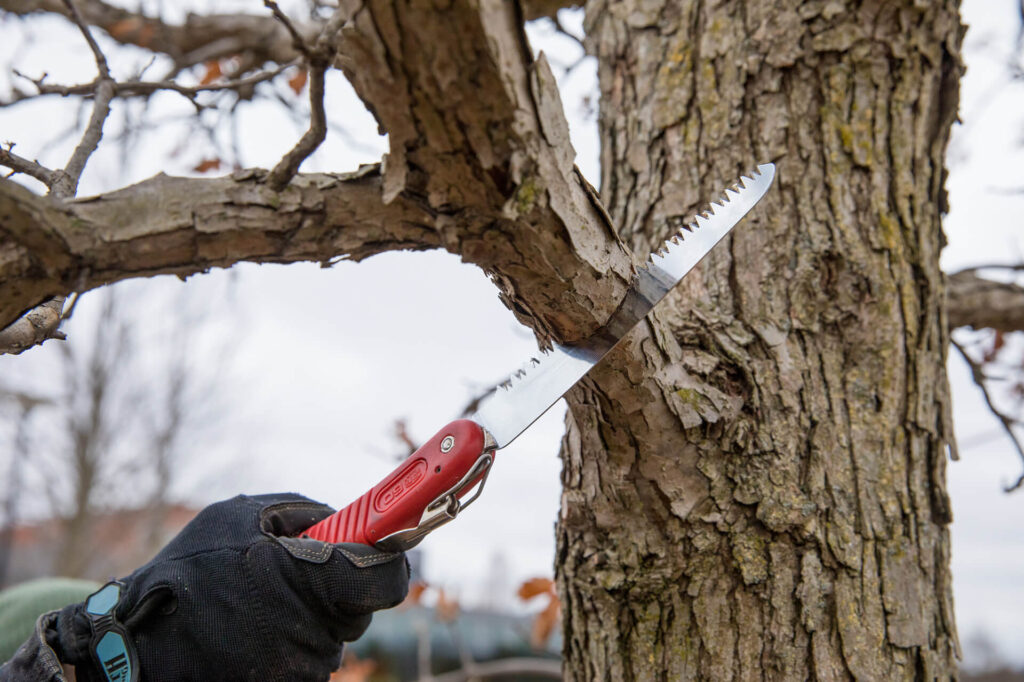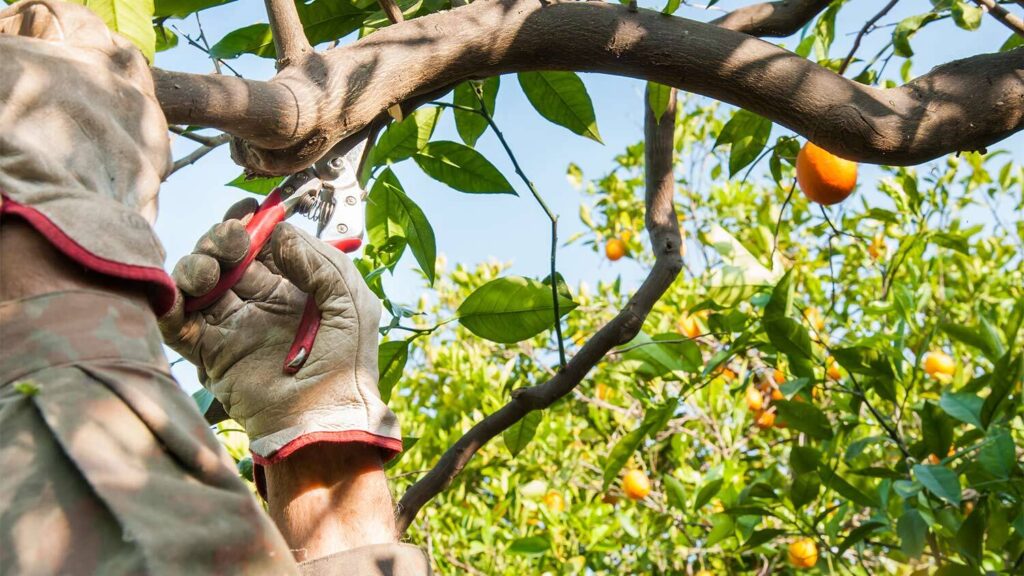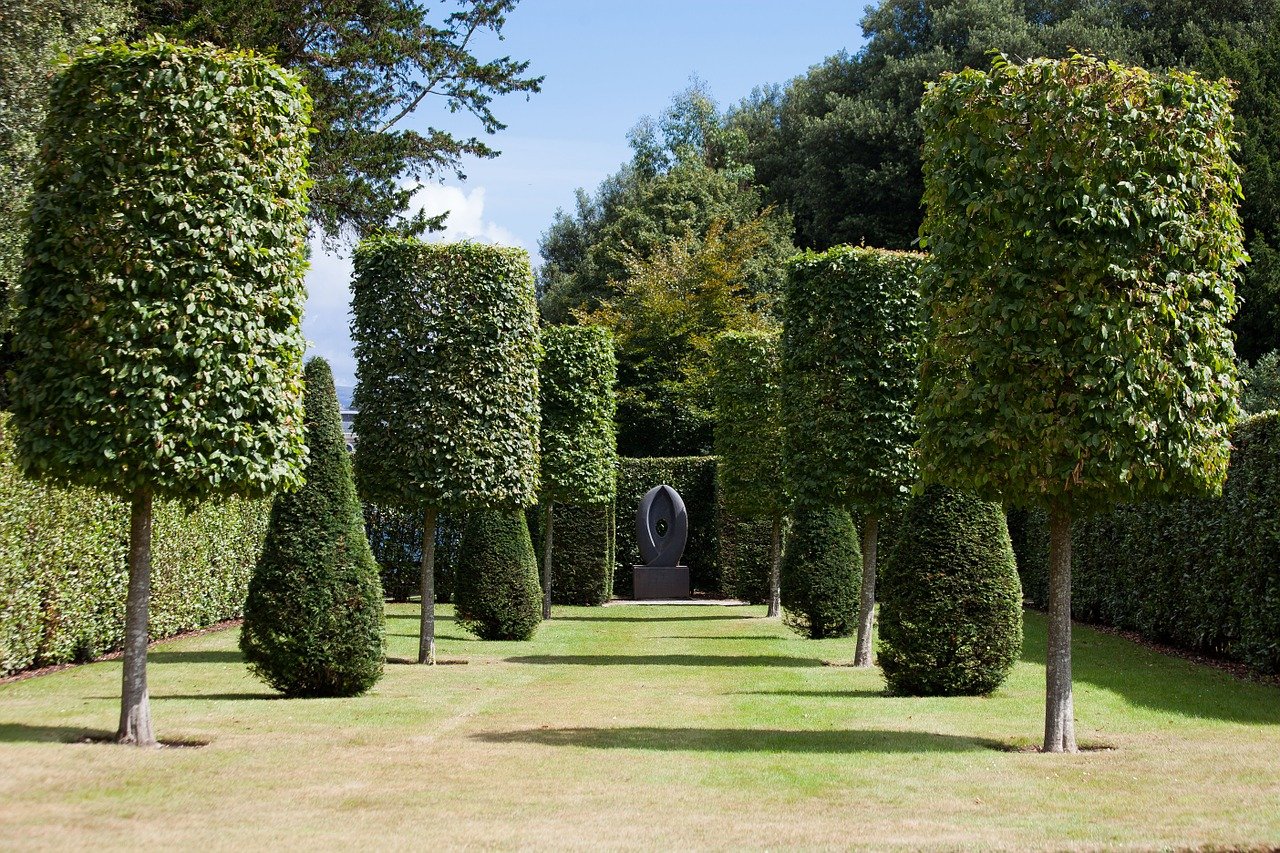Regular tree pruning plays a crucial role in ensuring the long-term health and vitality of trees. By understanding the basics of tree pruning, the importance of regular pruning, and the right timing and techniques for different tree species, you can help promote the well-being of your trees and prevent potential risks associated with neglecting pruning.
Understanding the Basics of Tree Pruning
What is Tree Pruning?
Tree pruning is a horticultural practice that involves selectively removing certain parts of a tree, such as branches, buds, or roots. It is done for various reasons, including shaping the tree’s structure, promoting healthy growth, and improving its appearance.
When it comes to tree pruning Sydney, there are different techniques that arborists use depending on the desired outcome. One common technique is crown thinning, which involves selectively removing branches to reduce the density of the tree’s crown. This allows more sunlight and air to reach the inner branches, promoting better overall health.
Another technique is crown raising, where lower branches are removed to increase the clearance between the ground and the lower part of the tree. This is often done to prevent obstruction of pathways or to create a more open space beneath the tree.
Tree pruning can also involve crown reduction, which is the selective removal of branches to reduce the overall size of the tree. This is often done to prevent the tree from interfering with power lines or structures, or to manage the tree’s growth in a confined space. Learn more how safeguarding your property and landscape with Hills District tree removal.

The Science Behind Tree Pruning
Pruning a tree involves understanding its biology and growth patterns. By removing dead or diseased branches, you can enhance the overall health of the tree. Additionally, pruning helps allocate resources more effectively, encouraging new growth and enabling the tree to withstand environmental stresses.
When a branch is removed, the tree redirects its resources to other parts, promoting the growth of new branches and leaves. This redistribution of resources helps the tree maintain a healthy balance and adapt to changing conditions.
Furthermore, tree pruning can also help improve the tree’s resistance to pests and diseases. By removing infected or infested branches, you can prevent the spread of pathogens and reduce the risk of further damage to the tree.
It is important to note that tree pruning should be done with care and precision. Improper pruning techniques or excessive removal of branches can weaken the tree and make it more susceptible to diseases and pests. Therefore, it is recommended to hire a professional arborist who has the knowledge and experience to prune trees correctly.
In conclusion, tree pruning is a vital practice for maintaining the health and appearance of trees. By understanding the basics of tree pruning and employing proper techniques, you can ensure the longevity and vitality of your trees for years to come.
The Importance of Regular Tree Pruning
Tree pruning is an essential practice for maintaining the overall health and longevity of trees. It involves the selective removal of branches and foliage to promote optimal growth and prevent potential issues. Regular pruning not only enhances the aesthetic appeal of trees but also contributes to their well-being in various ways.
Promoting Tree Health and Longevity
One of the primary benefits of regular pruning is the promotion of tree health and longevity. When dead, damaged, or diseased branches are promptly removed, the risk of decay and further damage is minimized. By eliminating these compromised branches, the tree can allocate its resources more efficiently to healthy areas, ensuring their proper growth and development.
In addition to removing deadwood, pruning also improves air circulation and sunlight exposure within the tree’s canopy. When branches are strategically pruned, it allows for better airflow, reducing the chances of fungal diseases that thrive in stagnant air. Moreover, increased sunlight penetration enables optimal photosynthesis, which is crucial for the tree’s energy production and overall vitality.
Preventing Disease and Pest Infestations
Pruning plays a significant role in preventing the spread of diseases and deterring pest infestations. Infected or infested branches can serve as a breeding ground for pathogens and pests, allowing them to spread throughout the tree and potentially cause severe damage. By identifying and removing these branches through regular pruning, you can limit the likelihood of diseases taking hold and spreading.
Furthermore, pruning helps create a less favorable environment for pests by eliminating their habitats and food sources. Many pests, such as insects and fungi, rely on dead or decaying branches as a source of nourishment. By removing these potential food sources, you can discourage pests from infesting the tree, reducing the risk of damage and the need for chemical interventions.

It is important to note that pruning should be done with care and proper techniques to avoid causing harm to the tree. Hiring a professional arborist or tree care specialist can ensure that pruning is performed correctly, taking into consideration the tree’s species, age, and specific needs.
In conclusion, regular tree pruning is crucial for maintaining tree health, promoting longevity, and preventing the spread of diseases and pest infestations. By investing in proper pruning practices, you can enhance the overall well-being and beauty of your trees, ensuring their vitality for years to come.
The Right Time for Tree Pruning
Seasonal Considerations for Pruning
The timing of tree pruning depends on the specific tree species and its growth patterns. In general, it is best to prune deciduous trees during their dormant season, typically in late winter or early spring. Pruning coniferous trees, on the other hand, can be done during the late winter or early spring months.
During the dormant season, deciduous trees have shed their leaves and entered a period of rest. Pruning during this time allows the tree to focus its energy on healing and regrowth without the added stress of supporting a full canopy of leaves. It also provides a clear view of the tree’s structure, making it easier to identify and remove any dead, damaged, or crossing branches.
Coniferous trees, such as pine, spruce, and fir, can also benefit from pruning during the late winter or early spring. This timing allows the tree to recover before the onset of new growth in the spring. Pruning conifers during this time can help maintain their shape, promote healthy growth, and prevent the development of dense, overcrowded branches.
Identifying Signs Your Tree Needs Pruning
Observing your tree’s condition can help determine when pruning is necessary. Look out for signs such as dead or damaged branches, excessive growth, obstructions, or abnormal leaning. If you notice these symptoms, it is crucial to take prompt action to prevent further damage and maintain tree health.
Dead or damaged branches can pose a safety risk, especially during storms or high winds. Pruning these branches can prevent them from falling and causing property damage or injury. Additionally, removing dead or diseased branches can improve the overall appearance of the tree and promote healthy growth.
Excessive growth, such as branches that are overcrowded or crossing, can hinder the tree’s development and increase the risk of disease or pest infestation. Pruning these branches can open up the canopy, allowing for better air circulation and sunlight penetration. It also helps redirect the tree’s energy towards stronger, more desirable branches.
Obstructions, such as branches that are blocking walkways, driveways, or obstructing views, may require pruning for practical purposes. Trimming these branches can improve accessibility and enhance the aesthetic appeal of your property.
Abnormal leaning or structural issues in a tree can indicate the need for pruning. Trees that lean excessively or have weak branch attachments may be at risk of toppling over during strong winds or storms. Pruning can help correct these issues and improve the tree’s stability and overall health.

Pruning Techniques for Different Tree Species
Pruning is an essential practice in tree care, and understanding the specific techniques for different tree species is crucial for maintaining their health and aesthetics. Whether you are dealing with deciduous trees or coniferous trees, each type requires unique pruning methods to ensure their optimal growth and longevity.
Pruning Deciduous Trees
Deciduous trees, known for their seasonal leaf color changes, require specific pruning techniques to maintain their desired shape and encourage new growth. One of the most common pruning methods for deciduous trees is crown thinning. This involves selectively removing branches within the crown to reduce its density. Crown thinning not only improves the tree’s appearance but also allows more sunlight and air circulation, promoting overall tree health.
In addition to crown thinning, deciduous trees can benefit from canopy reduction. This technique involves shortening the length of branches, which helps control the tree’s size and shape. Canopy reduction is particularly useful for trees that are growing too close to structures or obstructing views.
Another important aspect of pruning deciduous trees is selective branch removal. This technique involves removing specific branches that are dead, diseased, or damaged. By eliminating these branches, you prevent the spread of diseases and pests, ensuring the tree’s overall health and vitality.
Pruning Coniferous Trees
Coniferous trees, which include evergreen species, have different pruning requirements compared to deciduous trees. Pruning for conifers focuses on maintaining a central leader, thinning out excessive growth, and removing any dead or damaged branches.
One of the key objectives when pruning coniferous trees is to preserve their natural growth habits. Conifers often have a distinct pyramidal or conical shape, and pruning should aim to enhance and maintain this structure. Careful attention should be given to avoid over-pruning, as it can disrupt the tree’s overall form and compromise its ability to withstand harsh weather conditions.
Thinning out excessive growth is another important aspect of pruning conifers. By selectively removing some branches, you can improve air circulation within the tree’s canopy, reducing the risk of fungal diseases and promoting healthy growth.
Lastly, removing dead or damaged branches from coniferous trees is essential for their overall health and appearance. Dead branches not only detract from the tree’s beauty but can also pose safety hazards, especially during storms or strong winds.
Remember, when pruning any tree species, it is crucial to use proper pruning tools and techniques to minimize the risk of injury to yourself and the tree. If you are unsure about how to prune your trees correctly, it is always advisable to consult a professional arborist who can provide expert guidance and ensure the best results.
Risks of Neglecting Tree Pruning
Safety Hazards of Overgrown Trees
Neglecting tree pruning can lead to safety hazards, particularly when branches become weak, overloaded, or diseased. During storms or high winds, overgrown trees are more susceptible to branch failure, potentially causing property damage or endangering people. Regular pruning reduces the risk of such incidents.
Impact on Overall Tree Health
Without regular pruning, trees may experience decreased overall health and vigor. Overgrown branches can hinder proper air circulation, leading to increased moisture retention and potential fungal infections. Additionally, dense canopies can limit sunlight penetration, negatively affecting photosynthesis and growth.
In conclusion, regular tree pruning is vital for the long-term health and longevity of trees. Understanding the basics of pruning, the importance of regular maintenance, and the appropriate techniques for different tree species will help you promote healthy growth, prevent disease and pest infestations, and mitigate potential risks associated with neglected tree pruning. By prioritizing tree health through proper pruning practices, you can ensure the beauty, safety, and longevity of your trees for years to come.

